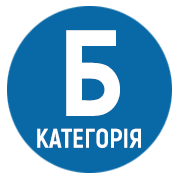EDUCATION IN THE PHYSICAL CULTURE OF STUDENTS
DOI:
https://doi.org/10.25128/2415-3605.23.1.30Keywords:
physical culture, physical education, education, STEMAbstract
Modern youth must orient themselves to new technologies, possess a wide range of competencies, make independent decisions, and show a creative approach to solving emerging problems. The presence of all the listed aspects in the younger generation can be guaranteed only by developing research skills. However, it is necessary to form these skills taking into account the requirements of the modern world and the accelerating technological progress. The phenomenon of STEM education, which is gaining popularity, can be considered one of the areas of innovation in recent pedagogy. Many countries are already implementing STEM ideas in educational institutions, achieving positive results in increasing the importance of education. The relevance of the study is confirmed by the presence contradiction between the need to modernize approaches, forms, methods, technologies for the formation of research skills and the predominance of traditional education models. The revealed contradiction allowed us to formulate a research problem: what are the possibilities of using STEM education in the process of physical education of students? The following were used to achieve the goal of research methods: psychological analysis-pedagogical literature on the problem of research, modeling of the process of physical education of schoolchildren in the conditions of implementation of STEM education. The publication reveals the concepts and principles of STEM education and describes the requirements for STEM projects and STEM lessons in general and in physical culture in particular. Examples of the implementation of STEM technologies in the physical education of students of general secondary education institutions are given. A special place is given to information and computer technologies in the implementation of STEM education. It was determined that STEM education is an innovative approach to the development of a modern school, which provides support for modern education in the country and contributes to increasing the level of formation of research skills of schoolchildren. The formation of research skills in physical education students in the conditions of STEM education is a system of purposeful work on design, modeling and construction. The model (project) should consist of interconnected modules: target (represented by the social order of modern society and approaches, principles, tasks that ensure the achievement of the set goal); meaningful (revealed by a specially developed additional educational program); organizational and operational (characterized by a complex of methods, forms and means, necessary for the effective formation of research skills in schoolchildren); evaluation-resultative. Emphasis is placed on the fact that the structure of physical education skills of schoolchildren acquired through the elements of STEM education consists of four groups: organizational (skills that allow planning and effectively organizing research work); search (skills that have the ability to find a research problem and select adequate research methods for solving it); informational (skills involving work with literary and technical means of information); evaluation (skills that allow you to argue your opinion in the evaluation of your own and third-party works).
References
American Association for the Advancement of Science (AAAS). Benchmarks for science literacy: A Project 2061 report. New York: Oxford University Press, 1993. URL: http://www.sciepub.com/reference/202199
Ashby M. Higher Education: Science, Technology, Engineering, and Mathematics trends and the role of federal programs (Testimony before the committee on education and the workforce, House of Representatives). Washington, D. C.: United States Government Accountability Offjce, 2006. Р. 1–12.
Roco M., Bainbridge W., Tonn B., Whitesides G. Converging Knowledge, Technology and Society: Beyond Convergence of Nano-Bio-Info-Cognitive Technologies. URL: http://www.wtec.org/NBIC2-Report
Donnelly J. E., Lambourne K. Classroom-based physical activity, cognition, and academic achievement. Preventive Medicine, 52, 2011. S. 36–42.
Dotsenko S. A. STEM-education as a means of development of creative abilities of students. Actual problems of globalization: collection of scientific articles. 2016. P. 218–224.
Erwin, H. E. Full STEAM ahead in physical education. Journal of Physical Education, Recreation & Dance. 88 (1), 3–4. 2017.
Grabowski H. Teoria Fizycznej edukacji. Warsazawa, 1997. 144 s.
Honey M., Pearson G., Schweingruber H. STEM integration in K- 12 education: Status, prospects, and an agenda for research. Nation Academy of Science. 2014. P. 1–13.
Meinel K. Motorycznosc Lubzka. SiT. Warsazawa, 1967. 370 s.
Minister Bruton launches the Report of the STEM Education Review Group. URL: www.education.ie/en/Press-Events/Press-Releases/2016-Press-Releases/PR2016-11-24.html H2 Learning, www.h2.ie
National Network for Manufacturing Innovation (NNMI) Program Strategic Plan. URL: https://www.manufacturingusa.com/resources/national-network-manufacturing-innovation-nnmiprogram-strategic-plan
Perspective. Deliverable 2: Knowledge Policies and Politics and the NBIC Field. European Commission FP6 project, 2009. URL: http://www.convergingtechnologies.org
Physical Education and Sport at School in Europe: Eurydice Report. Luxembourg: Publications Office of the European Union, 2013. 76 p.
Rifkin J. The Third Industrial Revolution; How Lateral Power is Transforming Energy, the Economy, and the World. Palgrave MacMilan, 2011. 270 p.
Rodger W. Bybee. What Is STEM Education? Science. 2010. Vol. 329 (5995). P. 996.
Sanders Mark E. STEM, STEM Education, STEMmania. The technology teacher. 2009. P. 20–26.
Science, Technology, Engineering and Math: Education for Global Leadership. URL: http://www.ed.gov/stem
STEM Education Consultation Report 2017. URL: https://www.education.ie/en/The-Education-System/STEM-Education-Policy/stem-education-consultation-report-2017.pdf.
STEM Education in the Irish School System Report. URL: https://www.education.ie/en/Publications/Education-Reports/STEM-Education-in-the-Irish-School-System.pdf
Taneja C. The psychology of excessive cellular phone use. Delhi Psychiatry J. 2014.№ 17. P. 448–451.
Tarnoff John. STEM to STEAM. Recognizing the Value of Creative Skills in the Competitive. URL: http://www. huffingtonpost.com/john-tarnoff/stem-to-steam-recognizing_b_756519.html
Tofel-Grehl C., Callahan C. M. STEM School Discourse Patterns. Journal of STEM education. 2017. (2). P. 35-41.
Wajciechowski, M., Hemphill, M. A. STEM and physical education: Making connections for our students, building strength for our profession. Strategies: A Journal for Physical and Sport Educators. 32(6). 2019. P. 43–45.
Shuttle Time Mobile Application. URL: https://shuttletime.bwfbadminton.com/shuttle-time-app
Ambasadori Digitali. URL: https://www.clasaviitorului.md/ambasadori-digitali/






